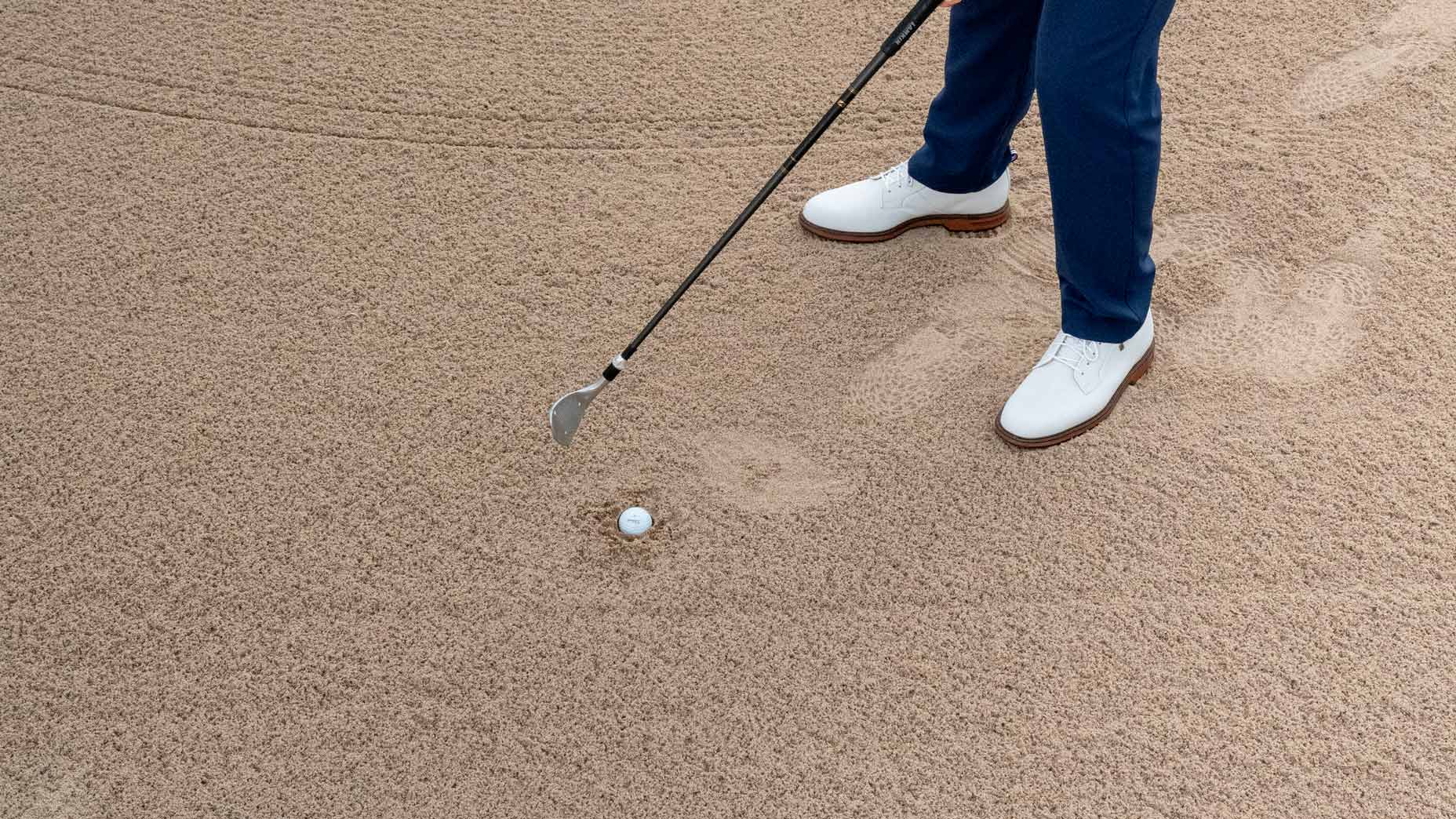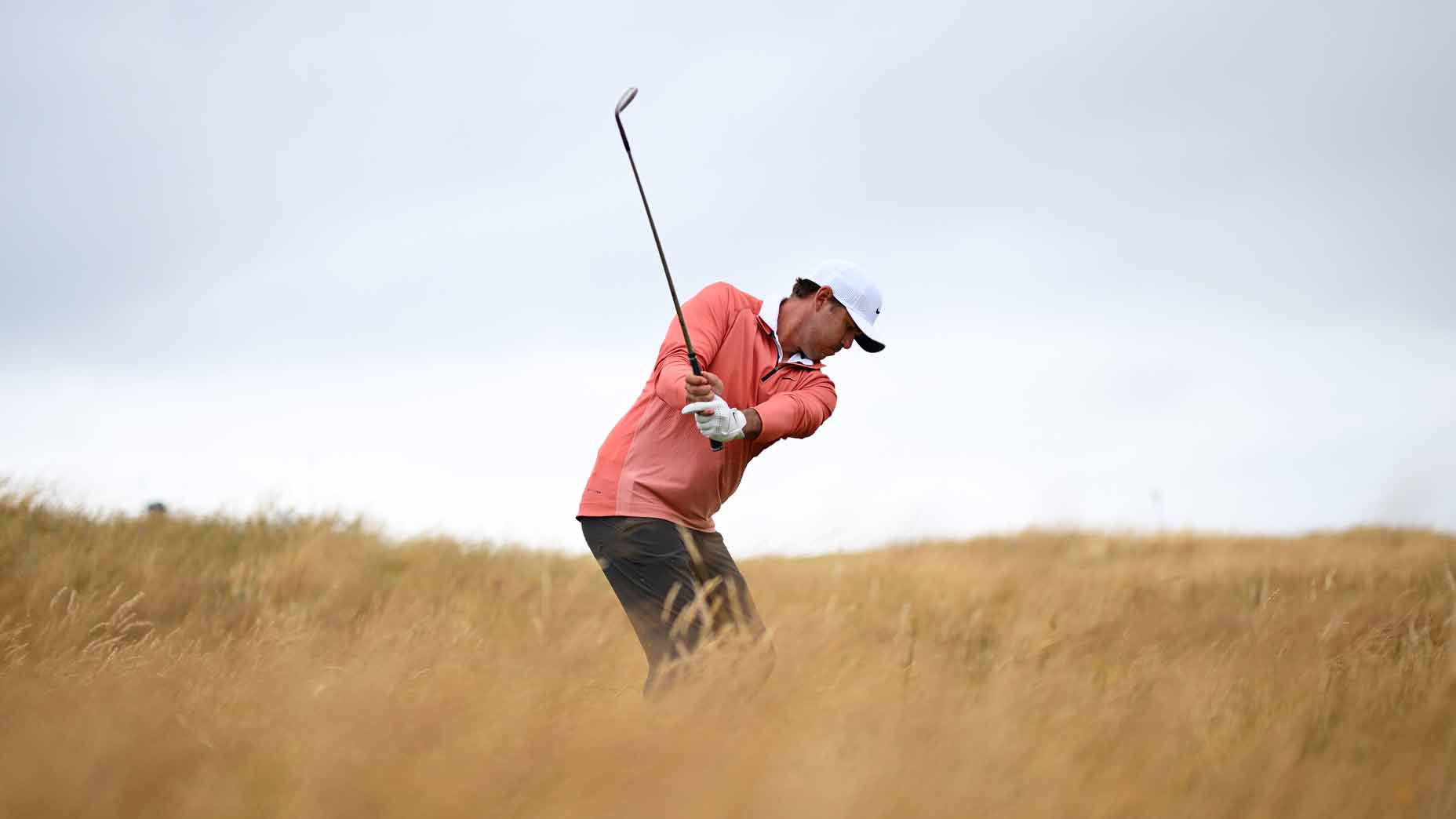OK, so you’ve shanked your drive off the tee and now find yourself scrambling. Fear not, because par is still very much in play — so long as you understand how to properly get up and down around the green.
Getting up and down can be the difference between shedding multiple strokes off your scorecard and being disappointed at the end of a round. But mastering the short game takes a lot of practice and repetition — but doesn’t everything in the game of golf?
When you find yourself sitting on the fringe around the green, GOLF Teacher to Watch Mike Bury shows you how to use a “putt chip” to get closer to the hole.
As Bury demonstrates in the video above, rather than grab a 56- or 60-degree wedge, which most golfers often rely on when getting up and down, he suggests using something like a 6-iron. This allows you to bump and run your ball towards the hole, rather than hit the perfect shot with a wedge.
“Depending on how far you need to make it roll, you can use an 8, 9, wedge, but, definitely no more lofted than a pitching wedge.”
Bury goes on to describe using a couple of elements of a putt mixed with some from a chip, with the necessary steps to follow prior to hitting you shot.
- Start with taking your stance really narrow – just one clubhead in between
- Align the ball with the middle of your stance
- Keep your weight 50/50
Next, it’s important to choke down on the club, holding onto the shaft (since the club is longer than a putter shaft is). Be sure to take the heel of the club off of the ground, leaving only the toe touching the ground.
As you take the club back, Bury says to “use a nice smooth putting stroke, brushing the grass [with the bottom of the club], without actually chipping into the grass.”
By utilizing this putt chip, golfers can put themselves closer to the cup, allowing for a shorter putt.
Regularly getting up and down will make every golfer’s round more enjoyable. It can make up for some bad shots earlier in the hole, and allow you to shed some strokes that may have previously been lost. So it’s worth taking Bury’s advice here and opt for a 6-iron next time your ball is sitting in the fringe, even if it feels unorthodox.










